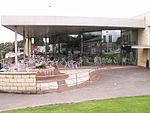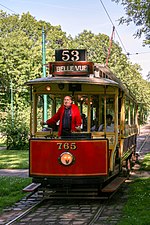Bowlee
Greater Manchester geography stubsMiddleton, Greater ManchesterVillages in Greater Manchester

Bowlee is a village in Greater Manchester, England. Bowlee is situated along the Heywood Old Road (A6045) on the outskirts of Middleton between Rhodes and Heywood. Historically it forms part of Lancashire.
Excerpt from the Wikipedia article Bowlee (License: CC BY-SA 3.0, Authors, Images).Bowlee
Heywood Old Road,
Geographical coordinates (GPS) Address Nearby Places Show on map
Geographical coordinates (GPS)
| Latitude | Longitude |
|---|---|
| N 53.553 ° | E -2.237 ° |
Address
Heywood Old Road
Heywood Old Road
M24 4GQ , Rhodes
England, United Kingdom
Open on Google Maps







